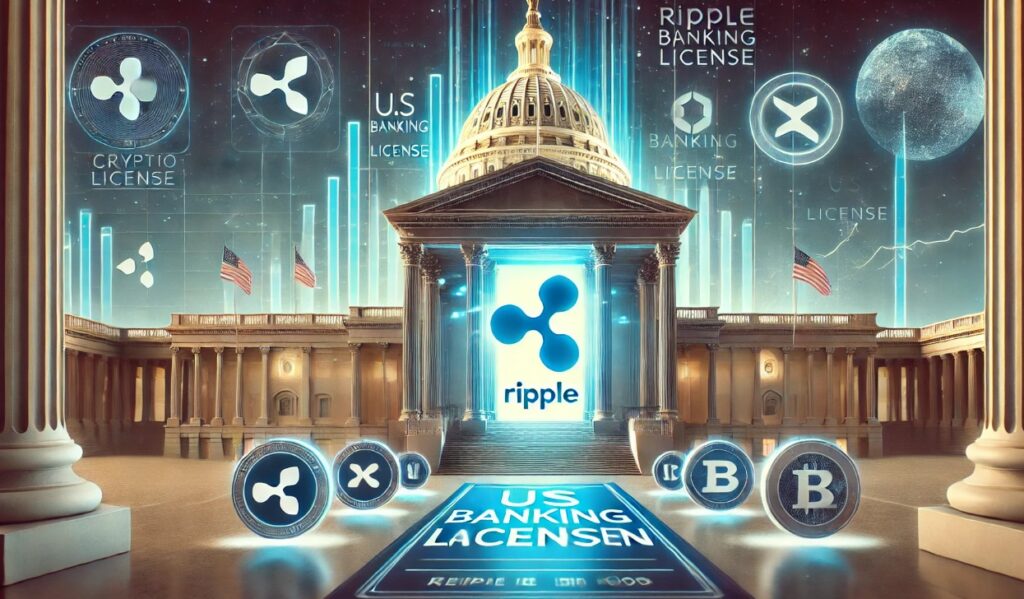In the ever-evolving landscape of cryptocurrency, Ripple is making notable strides as it seeks to establish a solid foundation in the United States financial system. This strategic move, bringing Ripple closer to securing a national bank charter and a Federal Reserve Master Account, signifies an enormous leap towards legitimizing its operations within the U.S. financial regulations framework. Such advancements highlight the company’s aspiration to revolutionize global payment systems. Let’s delve deeper into Ripple’s journey and its implications for the broader cryptocurrency market.
Ripple’s Ambition for U.S. National Bank Charter and Fed Master Account
The Strategic Pursuit of a National Bank Charter
Ripple’s recent application for a national bank charter represents a significant step toward streamlining its payment processes. This charter would minimize costs by reducing reliance on intermediary banks, facilitating more efficient transactions. The Office of the Comptroller of the Currency (OCC) is currently reviewing Ripple’s application, which must meet stringent regulatory standards. Achieving this charter would demonstrate Ripple’s commitment to operating transparently within the U.S. financial system, shedding any uncertainties associated with regulatory compliance.
Access to Federal Reserve Payments Infrastructure
In tandem with the bank charter, Ripple is pursuing access to a Federal Reserve Master Account. This access would grant Ripple the ability to interface directly with the Federal Reserve’s payment network, enhancing its capability to manage stablecoin reserves, particularly for its RLUSD stablecoin. Launched last October, RLUSD has secured a foothold in the stablecoin market with a valuation of around $470 million, despite being overshadowed by giants like Tether (USDT) and Circle (USDC).
Legal Developments with the SEC
Ripple’s strategic direction is further shaped by its ongoing legal dispute with the U.S. Securities and Exchange Commission (SEC). Recent indications from CEO Brad Garlinghouse suggest that Ripple and the SEC might be nearing a settlement, which could see both parties withdrawing their appeals. This development could significantly alter Ripple’s trajectory, enabling the company to realign its focus on advancing its pioneering vision, the “Internet of Value.” A favorable outcome of this legal battle may expand Ripple’s financial product offerings, making it more attractive to asset managers interested in cryptocurrency ETFs featuring XRP.
Market and Competitive Dynamics
Ripple’s efforts mirror those of other cryptocurrency entities, such as Circle, which recently announced plans to form a national trust bank. These maneuvers highlight the competitive and fast-growing nature of the cryptocurrency market, where establishing trust and regulatory compliance is paramount. Such moves also reinforce the potential of cryptocurrencies to become integral to the traditional financial landscape.
XRP Market Analysis
As Ripple makes these strategic advancements, the market response has been positive. Following the recent announcements, XRP has seen a price increase, trading at $2.23, reflecting a 3% rise. Despite this uptick, XRP remains 34% below its peak price of $3.40, indicating room for growth as these strategic initiatives unfold.
FAQs
How does a national bank charter benefit Ripple?
Securing a national bank charter would allow Ripple to execute transactions more efficiently by reducing intermediary costs. This step also signals regulatory approval, enhancing trust and legitimacy within the financial industry.
What is the significance of Ripple gaining access to a Fed Master Account?
Access to a Fed Master Account would enable Ripple to connect directly with the Federal Reserve’s payment system, allowing more efficient management of its stablecoin reserves and improving operational efficiency.
Is Ripple’s legal battle with the SEC nearing resolution?
Recent signals suggest that Ripple and the SEC might be approaching a settlement. Both parties are indicated to be considering withdrawing their appeals, which would end a prolonged legal dispute and allow Ripple to concentrate on its core mission.
What is the future outlook for XRP?
The future of XRP looks promising, particularly if Ripple secures a favorable legal outcome and continues to enhance its market infrastructure. These developments, alongside potential new financial products, could drive demand and price appreciation for XRP.
By comprehensively analyzing Ripple’s strategic moves and their implications, this guide provides valuable insights into its innovative efforts to shape the future of digital payments.

